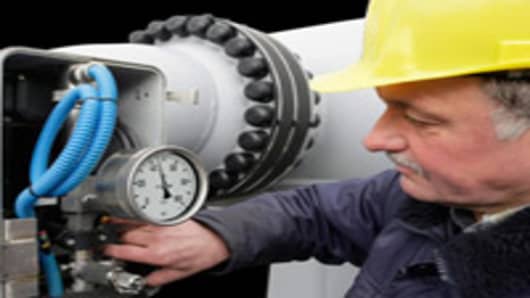It is a common question: “Why don’t the automakers sell more cars and trucks powered by compressed natural gas (CNG)?”
With nat gas at its lowest price in years (down 48 percent last year) while gasoline moves up above $4 a gallon, more people are interested in driving a nat gas vehicle. But look around, and you will find few for sale and only a few more on the road.
Why?
Blame it on the lack of infrastructure. There are so few nat gas pumps open to the public across the United States, auto executives fear the public’s desire to buy a nat gas powered vehicles will be limited at best. After all, why would some people buy a CNG car/truck if there are only a handful of places nearby to re-fuel that vehicle.
Consider this. There are more than 157,000 service stations in the U.S. with gasoline pumps.
This is why you see gas stations on seemingly every corner in suburban America. By comparison, there are just 505 stations that sell compressed natural gas to the public. In fact, there are six states that do not have a single CNG pump.
It’s the classic chicken and egg dilemma. Automakers are hesitant to build CNG powered vehicles if there won’t be mass sales. Without a slew of pumps around the country, the public will not buy/demand a large number of CNG models. And if there are not many people driving CNG cars, service station owners will not want to invest millions of dollars installing nat gas tanks or pumps that will generate little profit.
Despite the plans for many nat gas suppliers to grow the number of CNG pumps across the country, the increase will be slow.
Service stations make only a small percentage of their profits from the fuel they sell. Most of their profits come from the drinks, snacks, and other items they sell to people who come in to fill up. And from the service station owners perspective, the pumps that bring in as many customers as possible are the pumps that help drive the business.
Right now, compressed natural gas is a promising option for the future. In reality, few are filling up on the clean fuel.
Follow Phil LeBeau on Twitter: @lebeaucarnews




